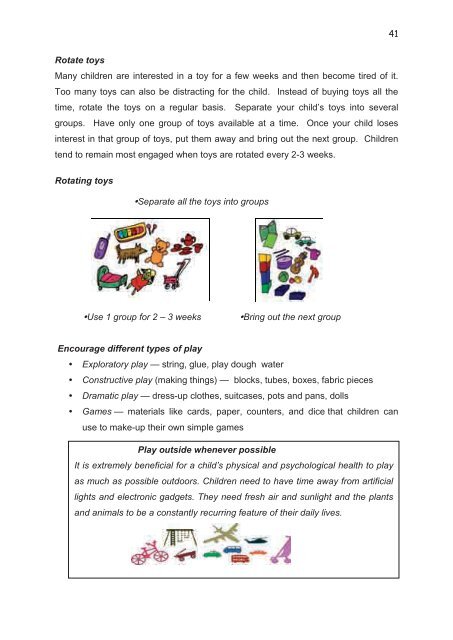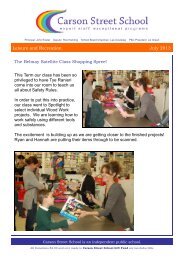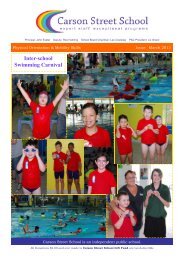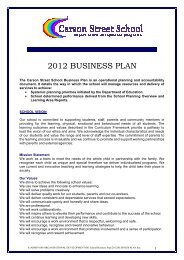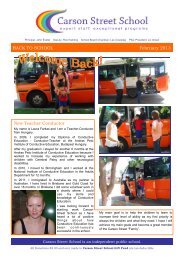What is play? - Carson Street School
What is play? - Carson Street School
What is play? - Carson Street School
Create successful ePaper yourself
Turn your PDF publications into a flip-book with our unique Google optimized e-Paper software.
Rotate toys<br />
Many children are interested in a toy for a few weeks and then become tired of it.<br />
Too many toys can also be d<strong>is</strong>tracting for the child. Instead of buying toys all the<br />
time, rotate the toys on a regular bas<strong>is</strong>. Separate your child’s toys into several<br />
groups. Have only one group of toys available at a time. Once your child loses<br />
interest in that group of toys, put them away and bring out the next group. Children<br />
tend to remain most engaged when toys are rotated every 2-3 weeks.<br />
Rotating toys<br />
•Separate all the toys into groups<br />
•Use 1 group for 2 – 3 weeks<br />
•Bring out the next group<br />
Encourage different types of <strong>play</strong><br />
• Exploratory <strong>play</strong> — string, glue, <strong>play</strong> dough water<br />
• Constructive <strong>play</strong> (making things) — blocks, tubes, boxes, fabric pieces<br />
• Dramatic <strong>play</strong> — dress-up clothes, suitcases, pots and pans, dolls<br />
• Games — materials like cards, paper, counters, and dice that children can<br />
use to make-up their own simple games<br />
Play outside whenever possible<br />
It <strong>is</strong> extremely beneficial for a child’s physical and psychological health to <strong>play</strong><br />
as much as possible outdoors. Children need to have time away from artificial<br />
lights and electronic gadgets. They need fresh air and sunlight and the plants<br />
and animals to be a constantly recurring feature of their daily lives.


